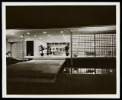"Conserving the Vitality of our Historic Places"
Lauren Weiss Bricker | Clarkson Chair in Planning

Tuna Canyon Detention Station, Los Angeles (Sunland-Tujunga), 1941-1945, photo from ca. 1960. Historic photos courtesy of Scott Family.
Join us for a public lecture with architectural historian Lauren Weiss Bricker, who comes to UB as our 2019 Clarkson Chair in Planning. Dr. Weiss Bricker is a widely regarded expert in historic preservation and a professor of architecture at California State Polytechnic University.
Wednesday, March 6, 2019
6 pm - 7:30 pm
Hayes 403
Watch the entire lecture on YouTube
"Conserving the Vitality of our Historic Places"
Historic preservation has defined itself as a field devoted to the protection of significant places against the misguided acts of humans or the impact of natural disasters. While these issues remain of paramount concern, those of us in the field realize that we, the preservationists may be responsible for some of the greatest losses of historic places owing to our own historical biases. Rather than bemoan what has occurred in the past, now and into the future, our great opportunity is to reassess the ways we interpret historic sites and develop strategies for maintaining the vitality of these places.
To this end, several directions will be explored in this presentation. These innovative ways to address the impact of climate change on historic sites, including making “hard choices” when we prioritize which sites to protect. There are ongoing efforts to democratize preservation so that it encompasses places significant to our entire population; these include a critical reassessment of criteria to evaluate the significance of a property that has evolved over time. Part of a widening view of historically significant sites is the recognition of intangible resources known through narrative and memory rather than material remains. Another dimension of the reevalution of what sites and work we preserve relates to works dating from the recent past– with the notion of “recent” extending into the 1970s-80s.
Ultimately, the revision of how and what we preserve will be in the hands of future preservationists with implications for preservation education. Bricker says her hope is that these ideas will engender a lively conversation with those in attendance.


